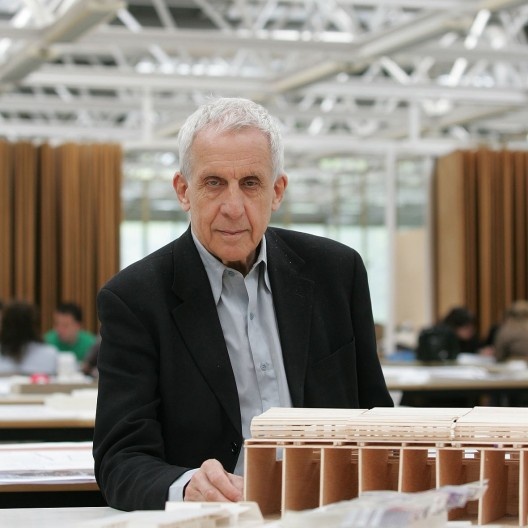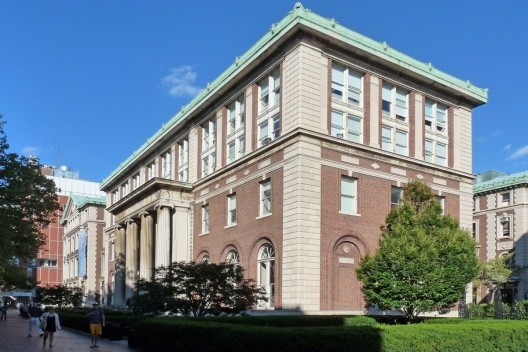
Kenneth Frampton
Foto Manuel Castells/Universidad de Navarra
It is not easy to introduce in a written work a person like Kenneth Frampton, and it is difficult to avoid using cliches such as the one just used, or others such as "Kenneth Frampton needs no introductions". Nor is it an easy task to ask him a series of questions, where all are entirely original, and which have have not already been touched on previously in an extensive collection of published work. Therefore the basic idea, used as a starting point for this interview, was to clarify some areas of doubt that reflect particular concerns of the author, which in turn may lead to a discussion of some relevant architectural themes.
I started the paperwork in June 2010 when spending some months at Columbia University in New York, carrying out further study for my doctoral thesis on the work of the architect Gordon Bunshaft (2). From the beginning I decided to ask Prof. Kenneth Frampton to be my thesis advisor, and on the 29thof August of 2010, I went to New York for a period of three months. During the meetings we had over those months, his gentleness, great energy, and, of course, the knowledge and insight he showed when answering my questions sparked my interest, and led me to asking him the following questions. It was an attempt to enter the world of Prof. Frampton, and explore how he feels about the city where he lives, the university where he is Professor Ware, his latest activities, some of the most recurrent themes throughout his career, and more; in short, his working context, both physical and intellectual. Finally, on November 26, Friday - a day after Thanksgiving (I could not avoid noticing that he agreed to receive me during one of the most important holidays in the U.S.) - we met at a cafe near his home in order to carry out the interview and discuss these issues.

The Avery Hall, GSAPP
Foto Nicolás Sica Palermo
Mostly because of the interviewee, the approach we adopted to the interview proved to be quite versatile. From a perspective that is at the same time wide and thorough, Professor Frampton explains his ideas through exterior references that do not necessarily come from his immediate environment. This made the conversation topics doubly interesting, by starting from a surrounding reality and then expanding to wider contents, both in time and space.
Interviews like this could be endless if it was not for the great activity and commitment of the interviewee, busy inside and outside the university, but invariably willing to promote and raise the level of architectural criticism, as long as he considers the topics relevant.
notes
1
Text checks for the English version: Prof. Simon Connolly.
2
Period of study at Columbia University in the City of New York between the 1st of September of 2010 and the 30th of November of 2010. Funded and supported by the official program Estancias Breves, ascribed to the FPI scholarship - Ministry of Science and Innovation - Government of Spain.



